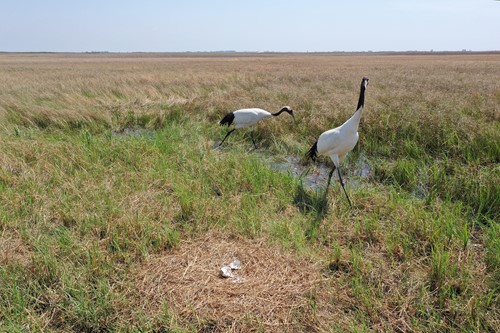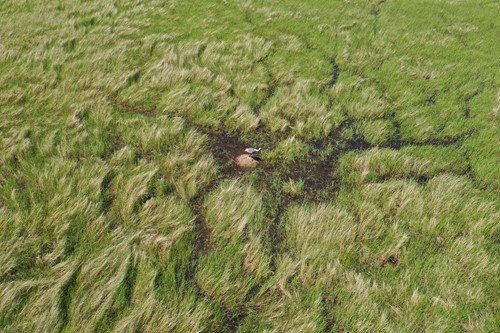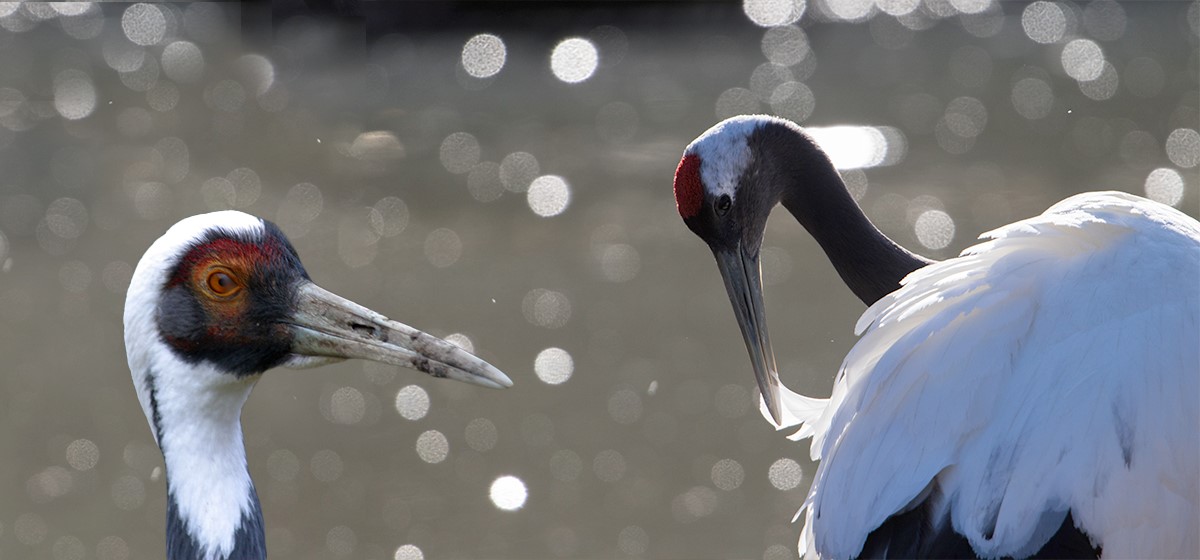Red-crowned crane & white-naped crane
The red-crowned crane is a large, white-colored crane with black feathers and a bright red crown on its head. The white-naped crane is also a large crane but with a gray body, white neck and bright red spots around the eyes. Both species live in eastern Asia and have had a sharp population decline in the wild in recent years.

Red-crowned cranes with nest. Photo: Anton Sasin WWF Russia
The main threats to these two cranes are habitat loss in both breeding and wintering areas, mainly due to expanding farmland, industries and aquaculture. Of the available habitat of the red-crowned crane that existed in 1980, only 8% of it remains today. As a result of large habitat losses, the cranes therefore live in high concentrations in few places, which means a greater risk of disease. In addition, they are threatened by poisons from pesticides, poaching, egg collection and prolonged periods of drought that increase predation. Both species are classified as Vulnerable on the International Red List.
Nordens Ark's work
In collaboration with WWF Russia, we have worked to protect and restore the species' breeding habitats in the Russian Far East. The project worked, among other things, to inventory cranes at nesting sites in the Amur region in the Russian Far East, identify and protect key habitats, increase protection for the cranes by supporting rangers to work against poaching, and carry out educational efforts for the local population. Protected habitats were primarily about creating and maintaining a network of protected areas of wetlands and grasslands. About four million hectares of crane habitat are protected in the Amur region.
In 2023, WWF's operations in Russia were declared "undesirable" and all of its operations illegal in the country. It is also not allowed to donate money to the organization or to share its materials online in Russia. Due to this decision, Nordens Ark do not have the opportunity to participate in the field work and contribute to the conservation of the cranes in the wild in Russia as of now.

White-naped cranes in the wild. Photo: Anton Sasin WWF Russia



